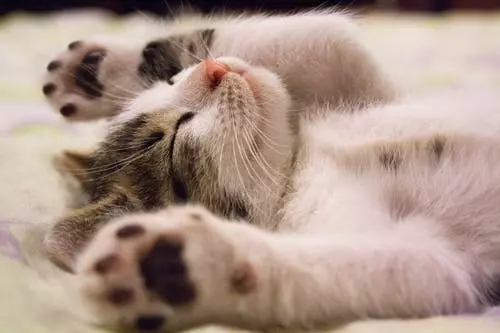Cats are beloved pets known for their independent and sometimes mysterious nature. However, there are times when their behavior can become problematic and cause stress and frustration for both the cat and their owner. In this comprehensive guide, we will explore some common cat behavioral issues and provide effective strategies to prevent and manage them. Additionally, we have included a helpful FAQs section at the end to address some commonly asked questions.
Understanding Common Cat Behavioral Issues
Cats may exhibit various behavioral issues, and understanding the underlying causes is crucial to effectively address them. Some common behavioral problems include aggression towards other animals or humans, inappropriate elimination (not using the litter box), excessive meowing or vocalization, and destructive scratching of furniture and other household items.
Creating a Cat-Friendly Environment
Creating a cat-friendly environment is essential to prevent and manage behavioral issues. Consider the following tips:
– Provide secluded spaces: Cats love to have their own private areas. Ensure they have access to hiding spots or elevated perches where they can retreat and feel safe.
– Offer vertical space: Install cat trees or shelves to give your feline companion opportunities to climb and observe their surroundings. Cats enjoy being in high places and it can help alleviate stress.
– Provide scratching posts: Cats have a natural instinct to scratch. Offer sturdy scratching posts to redirect their behavior away from your furniture.
– Establish a routine: Cats thrive on routine. Stick to a consistent schedule for feeding, playtime, and litter box cleaning. This can help reduce anxiety and provide a sense of security.
Providing Adequate Mental and Physical Stimulation
Boredom and lack of mental or physical stimulation can lead to behavioral problems. Here are some ways to keep your cat engaged:
– Interactive toys: Use puzzle toys or treat-dispensing toys to keep your cat mentally stimulated. These toys can challenge their problem-solving skills and provide entertainment.
– Playtime: Engage in interactive play sessions using toys that mimic prey, satisfying your cat’s hunting instincts. This can help burn off excess energy and prevent boredom.
– Rotate toys: Regularly change the toys available to your cat to prevent boredom and maintain their interest. This can make playtime more exciting and engaging.
Addressing Litter Box Problems
Litter box issues are a common source of frustration for cat owners. Follow these tips to prevent and manage such problems:
– Provide multiple litter boxes: Have one more litter box than the number of cats you own to avoid competition. Some cats prefer to have separate areas for urinating and defecating.
– Choose the right type of litter: Cats have preferences for certain litter textures. Experiment with different options to find the one your cat prefers. Some cats may prefer unscented litter.
– Keep the litter box clean: Scoop the litter box daily and completely change the litter at least once a week. Cats are clean animals and may avoid using a dirty litter box.
– Address medical issues: If your cat suddenly stops using the litter box, consult a veterinarian to rule out any underlying medical conditions. Urinary tract infections or other health issues can cause litter box aversion.
Dealing with Aggression
Aggression in cats can stem from fear, territoriality, or redirected aggression. Consider the following strategies:
– Identify triggers: Pay attention to the situations or stimuli that trigger aggression in your cat. This can help you avoid or manage those situations.
– Gradual desensitization: Expose your cat to the trigger in controlled situations, gradually increasing their tolerance. This can help them learn that the trigger is not a threat.
– Consult a professional: If aggression persists or escalates, seek guidance from a professional animal behaviorist or your veterinarian. They can provide personalized advice and guidance.
Managing Excessive Meowing
Excessive meowing can be bothersome. Follow these tips to manage and reduce this behavior:
– Rule out medical issues: Excessive meowing can sometimes indicate pain or discomfort. Consult a veterinarian to rule out any underlying medical conditions.
– Provide attention: Ensure your cat receives sufficient attention and interactive playtime to reduce their need for excessive vocalization. Sometimes, cats meow to get their owner’s attention.
– Ignore attention-seeking meowing: If your cat meows for attention, avoid rewarding the behavior by not responding or leaving the room. Eventually, they will learn that excessive meowing doesn’t lead to the desired outcome.
Coping with Destructive Scratching
Redirecting your cat’s scratching behavior is crucial to protecting your furniture and belongings. Consider the following tips:
– Offer appropriate scratching surfaces: Provide scratching posts or boards covered with materials your cat enjoys. Experiment with different textures like sisal, cardboard, or carpet to find their preference.
– Encourage positive associations: Place treats or catnip near the scratching post to entice your cat to use it. Positive reinforcement can help them develop a preference for the scratching post.
– Use deterrents: Apply double-sided tape or a pet-safe deterrent spray on furniture edges to discourage scratching. Cats dislike sticky surfaces or certain scents, which can help redirect their behavior.
Frequently Asked Questions (FAQs)
Q1: How can I prevent my cat from scratching my furniture?
A: Provide appropriate scratching surfaces, like scratching posts or boards, and encourage positive associations with them. Use deterrents on furniture edges and reward your cat for using the scratching post.
Q2: How can I stop my cat from meowing excessively?
A: Rule out any underlying medical issues, provide sufficient attention and playtime, and ignore attention-seeking meowing to avoid reinforcing the behavior.
Q3: Why is my cat suddenly eliminating outside the litter box?
A: There can be various reasons, including medical issues, stress, or a dirty litter box. Ensure the litter box is clean, consult a veterinarian, and consider any recent changes that may be causing stress.
Q4: How can I introduce a new cat to my resident cat without aggression?
A: Gradually introduce the cats through scent swapping and controlled visual introductions. Provide separate resources and spaces for each cat to avoid competition.
Q5: Can behavioral issues in cats be managed with medication?
A: In some cases, medication may be prescribed by a veterinarian to manage certain behavioral issues. However, it is typically used as a last resort and should be combined with behavioral modification techniques.
Q6: What should I do if my cat’s aggression is directed towards me?
A: If your cat’s aggression is directed towards you, it’s important to prioritize your safety. Consult a professional animal behaviorist or your veterinarian for guidance on managing and modifying this behavior.
Remember, every cat is unique, and it may take time and patience to effectively manage behavioral issues. If problems persist or escalate, consulting with a veterinarian or professional animal behaviorist is recommended. With proper understanding, care, and strategies, you can create a harmonious environment for both you and your feline companion.








